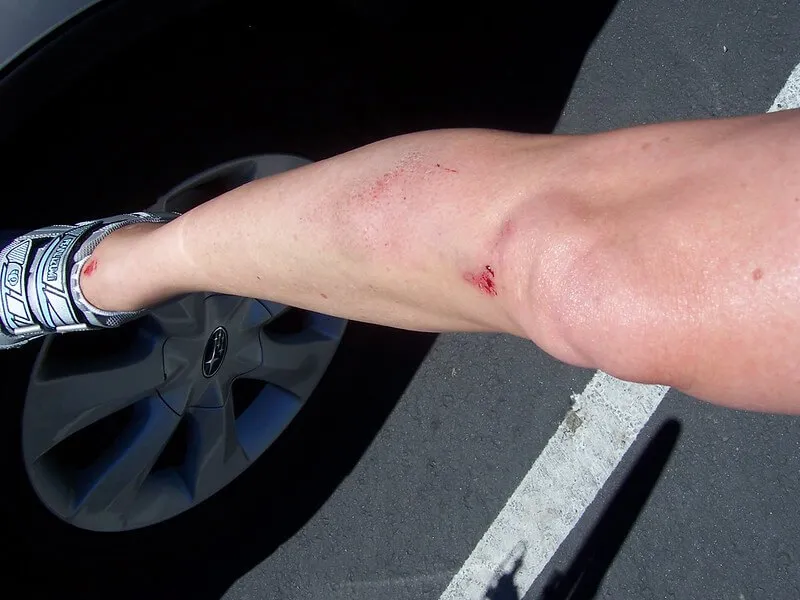Road rash is a frequently used term for skin abrasions (open wounds caused by skin rubbing against a rough surface). While the wound is often painful and can become infected, most people who experience road rash recover with at-home treatment within two to three weeks.
What are the Common Symptoms of Road Rash?
A road rash abrasion will look red, raw, and inflamed, as bleeding is common. Most people who experience road rash won’t feel pain at the centre of the wound, but the edges of the rash will be painful. Touching, bending, or rubbing the affected area will cause significantly more pain.
It’s vital to adjust your skincare routine if the abrasion occurs on the face, as some products could prevent healing or cause an infection.
Common signs of an infected wound include:
Increased redness, swelling, or pain after the first day
Warmth or a “pulsing feeling” around the affected area
Foul-smelling or irregular coloured drainage, pus, or fluid Flu-like symptoms, such as body aches, chills, or fever
Like with any infected wound, road rash could cause blood poisoning or septic shock in rare cases. If your wound looks infected, is three times bigger than the palm of your hand, or glass shards, muscle, or bones are visible, please speak to a healthcare provider right away.
What are the Common Causes of Road Rash?
Road rash typically occurs after a fall or as a result of being dragged across dirt or pavement. When a person comes in contact with the ground, areas of exposed skin could be scrapped off.
In this post, Dave Abels, a personal injury lawyer, provides some tips on how to avoid road rash. As motorcycle or cycling accidents are a leading cause of road rash, Dave Abels advises riders to protect their skin by wearing a helmet, protective clothing, and leather gloves.
However, road rash injuries are more common in the Spring and Summer, meaning less protective clothing is worn. Fortunately, you can find breathable gear suitable for the heat.
How is Road Rash Diagnosed?
Road rash doesn’t require professional treatment as long as the wound isn’t infected and you keep the abrasion clean and dry. If you do seek medical attention, your health care provider will perform a physical exam or perform an X-ray and order blood tests for severe road rash cases.
How do you Treat Road Rash?
Most mild cases can be treated with standard first aid, either at the impact site or when you get home. Most first aid kits will come with everything you need to clean and wrap the injury.
1. Rinse and Gently Clean the Affected Area
Rinse your wound with lukewarm, soapy water and gently brush out any dirt and debris. If you’re near a tub, soak your wound first before rinsing to reduce pain. If you see broken shards of glass or wood embedded in the road rash, take sterile tweezers and remove the debris.
2. Cover the Wound With Tight Dressing
Unless the road rash is bleeding profusely, you can wrap dry or saline moistened gauze around the wound. Wrap up the dressing tight enough, so it stays in place, but not so tight that you’re cutting off your circulation. If you’re using wet gauze, cover it with a dry layer before wrapping.
3. Get a Tetanus Shot (if you Need One)
Tetanus booster shots are recommended every ten years. If you haven’t gotten a tetanus shot in a while, you should head to the emergency room for one or book an appointment. The symptoms of tetanus take 4 to 21 days to appear, but once they do, the infection could be fatal.




















